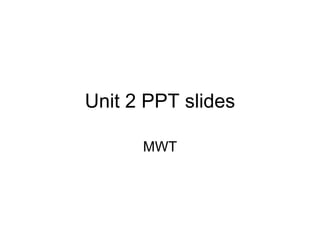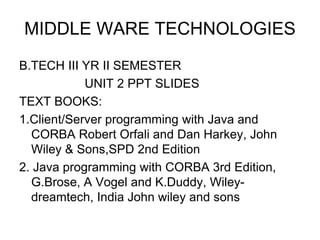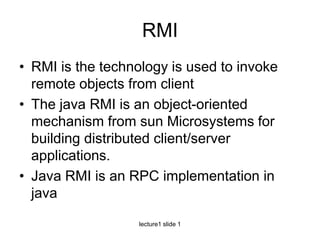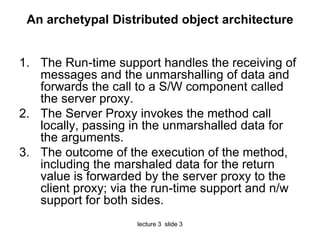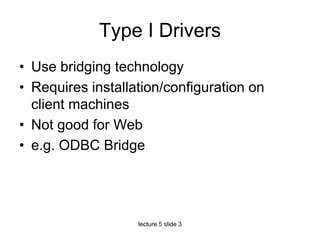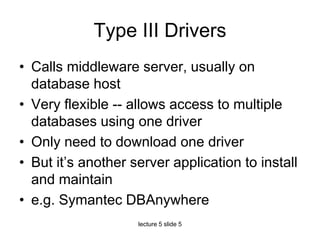This document provides an overview of the slides for Unit 2 of a course on Middle Ware Technologies. The slides cover topics including a review of Java concepts like RMI, JDBC, client/server CORBA-style, CORBA with Java, and the benefits of CORBA ORB. Specific lecture slides discuss RMI architecture, distributed object systems, steps in a remote procedure call, and the Java RMI API.
